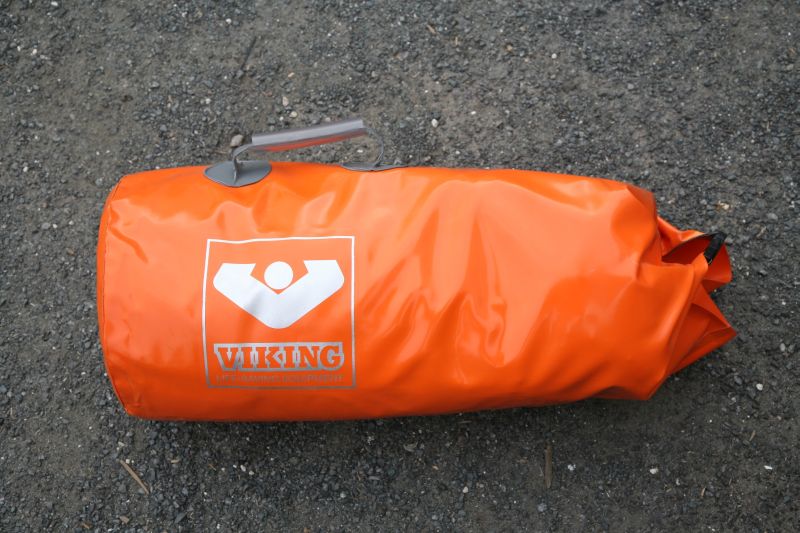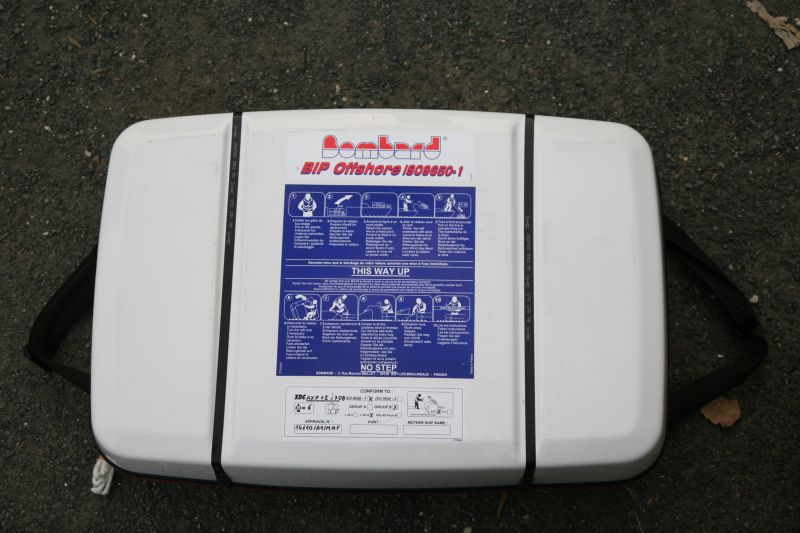Understand to be safe
Regulations
Standard ISO 9650 Life raft
This international standard has been in force since 2005 and covers all rafts of recreational craft of less than 24m in length. Two types of raft are regulated by this standard: coastal ISO 9650-II and the high seas ISO-9650-1.
ISO 9650 type II rafts.
Type II rafts are adapted to coastal navigation. They are less robust than the type I but more lightweight. They are designed to inflate at a temperature of between 0 ° C and 65 ° C. The bottom of the raft is simple and of standard strength. They are designed for mild weather.
ISO 9650 type I raft
This category is divided into two classes; A and B. The class A is stronger than the class B. There are also differences in inflation temperature and the design of the bottom. The class A can be inflated between -15 ° C and 65 ° C and the bottom is doubled. The class B between 0 ° C and 65 ° C and h as a simple bottom. In both classes, the equipment may be erected rapidly and hold up for 24 hours or more, until help arrives. The raft holds only the minimum of water and food. The leisure sailor should add a survival bag.
This international standard has been in force since 2005 and covers all rafts of recreational craft of less than 24m in length. Two types of raft are regulated by this standard: coastal ISO 9650-II and the high seas ISO-9650-1.
ISO 9650 type II rafts.
Type II rafts are adapted to coastal navigation. They are less robust than the type I but more lightweight. They are designed to inflate at a temperature of between 0 ° C and 65 ° C. The bottom of the raft is simple and of standard strength. They are designed for mild weather.
ISO 9650 type I raft
This category is divided into two classes; A and B. The class A is stronger than the class B. There are also differences in inflation temperature and the design of the bottom. The class A can be inflated between -15 ° C and 65 ° C and the bottom is doubled. The class B between 0 ° C and 65 ° C and h as a simple bottom. In both classes, the equipment may be erected rapidly and hold up for 24 hours or more, until help arrives. The raft holds only the minimum of water and food. The leisure sailor should add a survival bag.
Which model should I go for?
A raft is only mandatory for navigation of more than 6 miles from shelter. Nevertheless, we advice you to provide an ISO 9650 type raft, if you sail more than 2 miles from shelter. For high seas navigation, an ISO 9650 type I raft is necessary. If it difficult to know whether help will reach you in less than 24 hours, we recommend that you arm yourself with a Grab-bag (survival kit,) which contains all the material you need to transform a type I raft of less than 24hours into plus 24hour type I raft.

Bag or container?
The bag is easier to store but more vulnerable to weather, than the container. The latter poses less difficulty for placing in the water. The interior of a raft is small. If you sail with four, take one with six places; with six take one for eight. In addition, it is often more practical to take two rafts (given the weight of a ten place raft.)

En container, le radeau est mieux protégé.How does it work?
On all the rafts there is a strap. It must always be attached to the boat. It is this that triggers the inflation of the raft. By pulling this strap, the release switch on the percussion head of a bottle of compressed air is activated, this inflates the raft. There are a number of varieties of raft, with inflatable bottom, isolated bottom, PVC or rubber. We often tend to choose the least expensive. In case of need we may regret this. The raft must be on deck, secured to the boat or on its support, ready to be cast into the sea. Always remember that a raft is very heavy, do not store it in a trunk or inside the boat.


Professional advice
“Righting an inflated raft that is upside down, or has been turned by a wave is a very physical manoeuvre. Choose a self-righting model, it can save lives.”
“Righting an inflated raft that is upside down, or has been turned by a wave is a very physical manoeuvre. Choose a self-righting model, it can save lives.”
Reviews
The review is provided every 3 years until the 15th year (note that Bombard advises an annual review starting from the 10th year.) This consists of taking the raft back to the shop to which it is assigned. Attention; in tropical zones the manufacturers impose annual reviews. Remember a review imperatively requires:
-Examination of the bottle (detection of leaks by weighing)
-The percussion head
-Checking the valves
-Inspection of the general condition of the structure
-An inflation of the raft to test the seals.
-Verification of expirable material and its replacement if necessary.
-Finally, the reconditioning and re-storing of the raft.
-Examination of the bottle (detection of leaks by weighing)
-The percussion head
-Checking the valves
-Inspection of the general condition of the structure
-An inflation of the raft to test the seals.
-Verification of expirable material and its replacement if necessary.
-Finally, the reconditioning and re-storing of the raft.
Flotation devices
At less than six miles from shelter, in addition to compulsory individual equipment (vests or jackets,) it is recommended to have floating cushions or other devices (previously obligatory.) When one is in the water, these permit them to wait for help without getting tired. We suggest devices for 3 to 10 people and individual cushions for 2 people.
Tips
The survival bag
It is always better to plan ahead. When the ship is in distress it may be too late to construct a survival bag. For high seas sailing, it is advisable to prepare a container (bag or waterproof container) with water, food, batteries, lamps, flares, VHF, medicines…If one uses a waterproof bag and leaves an air pocket inside, it will float once thrown into the water. Provide a cord for attaching it to the raft.
The survival bag
It is always better to plan ahead. When the ship is in distress it may be too late to construct a survival bag. For high seas sailing, it is advisable to prepare a container (bag or waterproof container) with water, food, batteries, lamps, flares, VHF, medicines…If one uses a waterproof bag and leaves an air pocket inside, it will float once thrown into the water. Provide a cord for attaching it to the raft.
